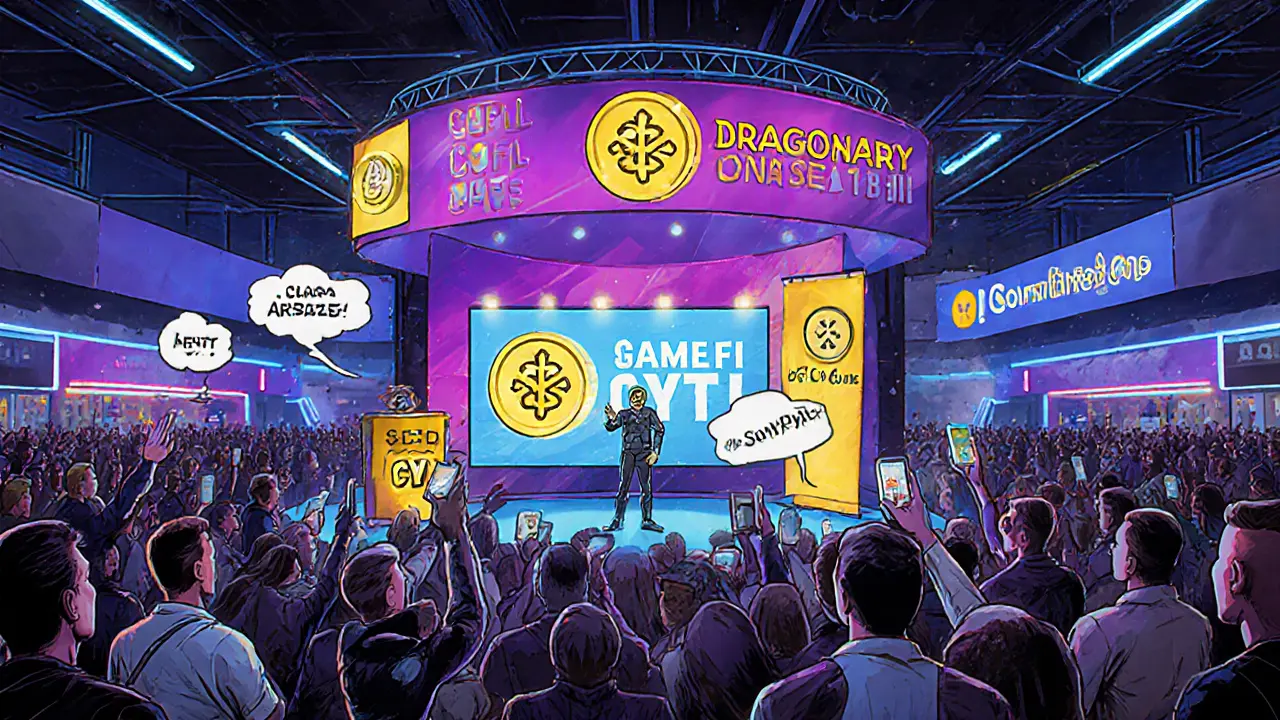CYT Airdrop Deep Dive: Dragonary Details from the BSC GameFi Expo
Discover the full details of the CYT airdrop from Dragonary's BSC GameFi Expo, including claim steps, tokenomics, performance, and future outlook.
When diving into Dragonary, a blockchain‑based play‑to‑earn adventure that mixes fantasy RPG elements with real‑world token economics, also known as Dragonary Game, you quickly see why it’s drawing gamers and investors alike. Play‑to‑Earn Gaming, a model where players earn tradable crypto rewards for in‑game actions is the core engine, while NFT, unique digital collectibles that represent characters, gear, and land parcels give each asset verifiable ownership on the blockchain. The platform also leans on DeFi, decentralized finance services like staking and liquidity mining to let players put earned tokens to work. All of this runs on a Blockchain, a distributed ledger that ensures transparency and security for every transaction, making the whole ecosystem both immersive and financially meaningful.
One of the biggest draws of Dragonary is its dynamic token economy. The native token fuels everything from marketplace purchases to governance votes, and it can be staked to earn passive income. This means players aren’t just grinding for bragging rights; they’re building an asset portfolio that can appreciate over time. The game’s NFT marketplace lets users buy, sell, or auction rare dragons and land, each backed by provable scarcity. Because these items sit on a public ledger, you can verify rarity without relying on a central authority, which cuts down fraud and boosts confidence among traders.
Dragonary’s design hinges on three pillars. First, the gameplay loop rewards active participation – quests, battles, and crafting all generate token payouts. Second, the integration of DeFi tools means those payouts don’t sit idle; players can lock tokens in liquidity pools, earn yield, or participate in governance proposals that shape future updates. Third, the community aspect is baked in via airdrop events and referral programs that hand out bonus tokens to early adopters. These airdrops often target users who hold specific NFTs or stake a minimum amount, creating a virtuous cycle of engagement and token circulation.
From a technical standpoint, Dragonary runs on a scalable layer‑2 solution to keep transaction fees low and speeds high – crucial for an action‑heavy game where dozens of moves happen each minute. The smart contracts govern everything from NFT minting to token distribution, and they’re publicly audited to reassure users about security. This architecture also enables cross‑chain bridges, so assets can eventually move between Ethereum, Solana, and other ecosystems, expanding the game’s reach.
If you’re new to the space, the first step is setting up a Web3 wallet compatible with the game’s network. Once connected, you can claim a starter pack – often delivered via a small airdrop – that includes a basic dragon NFT and a seed amount of the native token. From there, the learning curve is gentle: the platform offers tutorials on staking, swapping, and marketplace navigation, ensuring that even casual gamers can start earning without a finance degree.
Seasonal events keep the economy fresh. Dragonary regularly rolls out limited‑time quests that drop exclusive NFTs or bonus token multipliers. These events not only boost player activity but also introduce new tokenomics tweaks that can affect supply and demand. Tracking these changes is essential for anyone looking to maximize returns, as price spikes often follow major updates or airdrop announcements.
Risk management is another piece of the puzzle. Like any crypto venture, token prices can swing wildly, and NFT values depend on rarity, utility, and market sentiment. Smart players diversify by holding a mix of utility tokens, staking yields, and NFTs that have use cases beyond just showpiece status – such as land that generates passive token revenue. Staying informed through community channels, official blogs, and market analytics helps mitigate surprise drops.
Beyond the game itself, Dragonary is influencing the broader crypto‑gaming landscape. Its hybrid approach of combining Play‑to‑Earn mechanics with DeFi incentives sets a template that other developers are copying. Observers note how the token’s governance model encourages player‑driven development, blurring the line between developer and community. This participatory vibe is why many see Dragonary as a bellwether for the next wave of financially integrated games.
In short, Dragonary offers a complete ecosystem where gaming fun meets real‑world financial opportunities. Whether you’re after the excitement of battling dragons, the thrill of owning a scarce NFT, or the potential of staking tokens for passive gains, the platform packs it all into a seamless experience. Below you’ll find a curated list of articles that dive deeper into specific aspects – from exchange reviews that list Dragonary’s token, to airdrop guides, to strategies for managing risk in play‑to‑earn markets. Keep reading to sharpen your strategy and stay ahead of the game.

Discover the full details of the CYT airdrop from Dragonary's BSC GameFi Expo, including claim steps, tokenomics, performance, and future outlook.